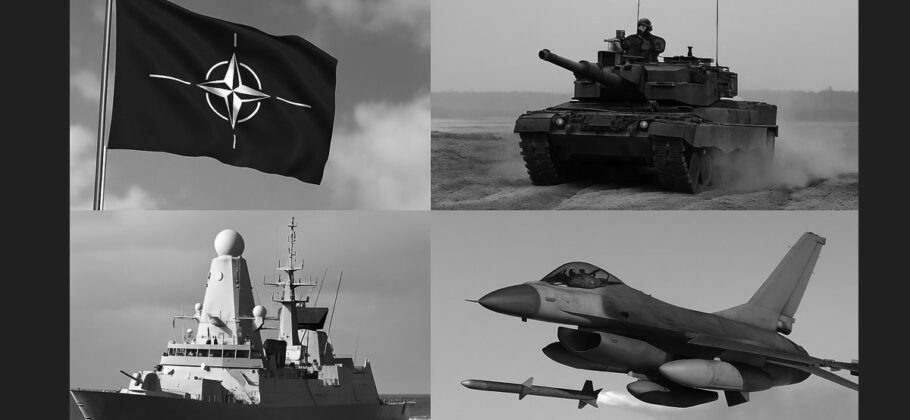President Donald Trump is heading into the upcoming NATO summit in The Hague with a bold demand that could reshape the alliance’s future. He wants every NATO member to commit to spending 5% of their gross domestic product (GDP) on defense, a dramatic increase from the current 2% guideline that has been in place since 2014.
This new proposal, which Trump has pushed for over several years, is already being referred to as one of the most significant shifts in NATO’s funding expectations since its founding in 1949. According to a senior U.S. official who spoke on condition of anonymity, “There is no way they would be going to 5 percent without Trump… So he sees this as a major win, and it is.”
The goal is to divide the 5% spending into two categories: 3.5% for direct military expenses, such as equipment, personnel, and defense systems, and another 1.5% for broader security-related costs. These include investments in transportation infrastructure, cybersecurity, and domestic readiness to respond to conflict.
Trump is expected to deliver a major speech at the summit’s close, positioning the new pledge as the direct result of his leadership and persistence.
U.S. Exempt from Trump’s Own Standard
While Trump is calling on other countries to increase their defense budgets, he has stated that the United States should not be held to the same standard. When asked about this, Trump responded, “I don’t think we should. But I think they should.” He went on to argue, “We’ve been supporting NATO so long, in many cases, I believe, paying almost 100% of the cost.”
Currently, the United States spends about 3.4% of its GDP on defense, far ahead of most other NATO members. Trump’s position is that the U.S. has subsidized European defense for decades and now expects Europe to take more responsibility. In his view, America should focus more on China and protecting its own borders while NATO countries shoulder more of their own security.
Allies Divided: Who’s In, Who’s Pushing Back
Some NATO members have already agreed to meet the new 5% target. Sweden and the Netherlands were among the first to publicly support the change ahead of the summit. Swedish Prime Minister Ulf Kristersson said, “Sweden will reach a new NATO spending target to 5% of GDP, where at least 3.5% of GDP will be allocated towards core defense requirements to fulfill NATO’s new capability targets.” He emphasized that the decision was based on regional security concerns, especially the threat posed by Russia.
The Dutch caretaker government also announced it would meet the 5% goal. Defense Minister Ruben Brekelmans described the move as “historic” and said, “My expectation is that this will happen,” referring to other countries joining the pledge.
Other Eastern European nations are also on board. Lithuania plans to spend between 5 and 6% of its GDP on defense from 2025 to 2030. Estonia is moving from 3.7% to a full 5%. Poland is expected to spend 4.7% this year, the highest among NATO members. These countries say their increases are driven not only by U.S. pressure but also by their proximity to Russia. Since Russia invaded Ukraine in 2022, regional leaders have said they must take security more seriously.
Spain Leads the Opposition
However, not all NATO members agree with Trump’s demands. Spain has openly rejected the 5% spending goal. Spanish Prime Minister Pedro Sánchez sent a letter to NATO Secretary-General Mark Rutte asking for either full exemption or a more flexible framework. “Committing to a 5% target would not only be unreasonable, but also counterproductive,” Sánchez wrote. He warned that the requirement would interfere with efforts by the European Union to develop its own security and defense capabilities.
Sánchez also argued that drastically increasing defense spending could harm Spain’s social programs and overall budget priorities. “As a sovereign Ally, we choose not to,” he declared.
Spain currently spends only about 1.28% of its GDP on defense, the lowest in the alliance. While the country has pledged to work toward NATO’s original 2% goal, Sánchez said going beyond that would strain the nation’s welfare state. Despite asking for flexibility, he said Madrid does not want to block the summit’s outcome. However, since NATO decisions require unanimous agreement, Spain’s refusal gives it the power to delay or weaken the final resolution.
Trump criticized Spain’s stance, calling the country “a very low payer” and insisting that “Spain has to pay what everybody else has to pay.” He also singled out Canada, accusing it of contributing little. “You know who else is a low payer, just about the lowest? A place called Canada,” Trump said. “Because Canada said, ‘Why should we pay when the United States will protect us for free?’”
Deadlines and Diplomacy
A key sticking point is the timeline for meeting the 5% goal. While the United States and Eastern European allies are pushing for a deadline by 2030, other countries want more time. NATO Secretary-General Mark Rutte has suggested 2032 as a compromise, though some diplomats believe 2035 may be more realistic.
The disagreement over timing has added to the summit’s tension. Former U.S. Ambassador to NATO Ivo Daalder warned that “Trump is probably thinking of a timeline that is by the end of this decade, if not sooner. That’s where I think [the summit] can blow up.”
To reduce the risk of open conflict at the meeting, NATO leaders shortened the summit to just 24 hours and focused the agenda almost entirely on the defense spending pledge.
One European defense official admitted, “He has to get credit for the 5 percent—that’s why we’re having the summit. Everything else is being streamlined to minimize risk.”
The proposed spending increase comes amid growing concerns about global security, particularly due to Russia’s war in Ukraine and rising tensions with China. According to reports, Russia now spends between 6.2% and 6.3% of its GDP on defense—more than any time since the Cold War. That number represents up to 40% of its national budget.
Supporters of Trump’s plan argue that NATO cannot defend itself with outdated military capabilities and underfunded armies. They believe that the 5% target is not just about fairness, but about survival. “This isn’t just about Trump,” said one senior NATO official. “This is about making sure Europe can actually defend itself.”
Critics worry that rapid increases in defense spending will come at the cost of education, healthcare, and infrastructure. They also fear that Trump’s confrontational style could weaken NATO unity, especially if countries feel they are being pressured too aggressively.
Still, if the 5% pledge is adopted, it would be the most ambitious financial shift in NATO history. Whether it strengthens the alliance or deepens divisions will depend on what happens in The Hague and how much compromise leaders are willing to accept.
FAM Editor: Keep in mind that Trump ALWAYS starts negotiations at the uncomfortable extreme. The final number will be higher than 2% but less than 5% – but NATO will agree to something. We suspect it will be close to America’s 3.5%.





